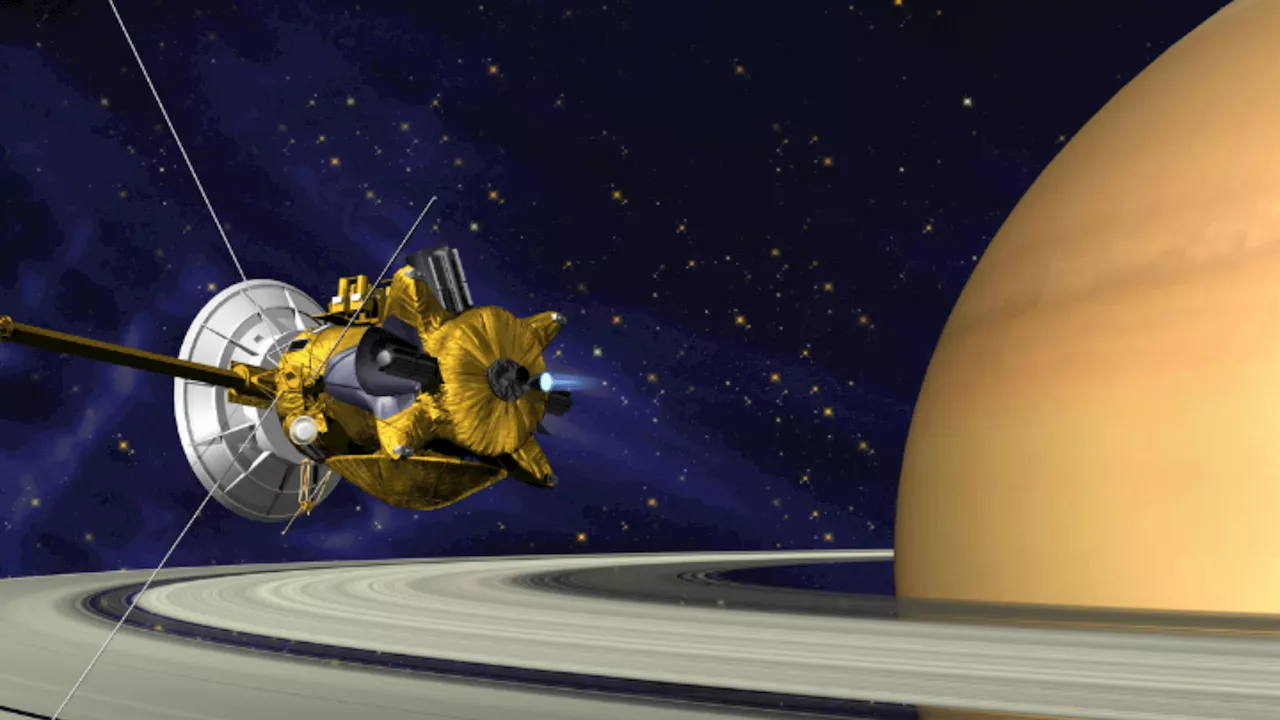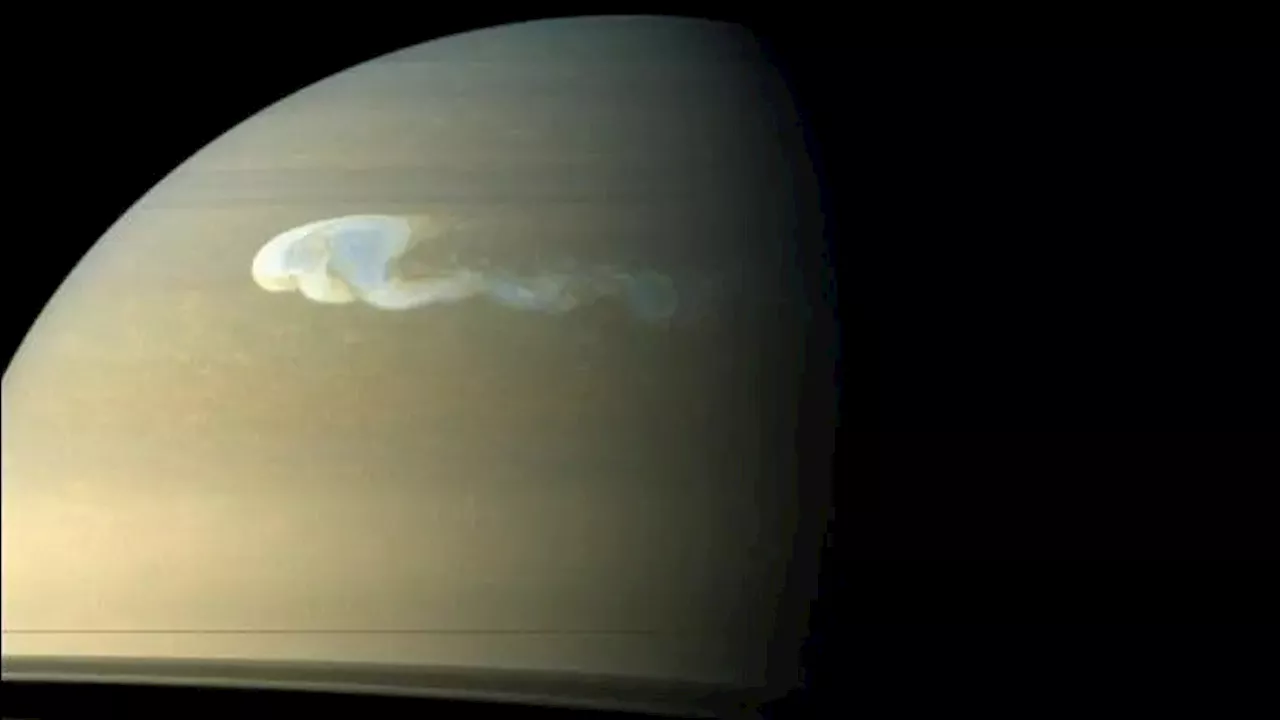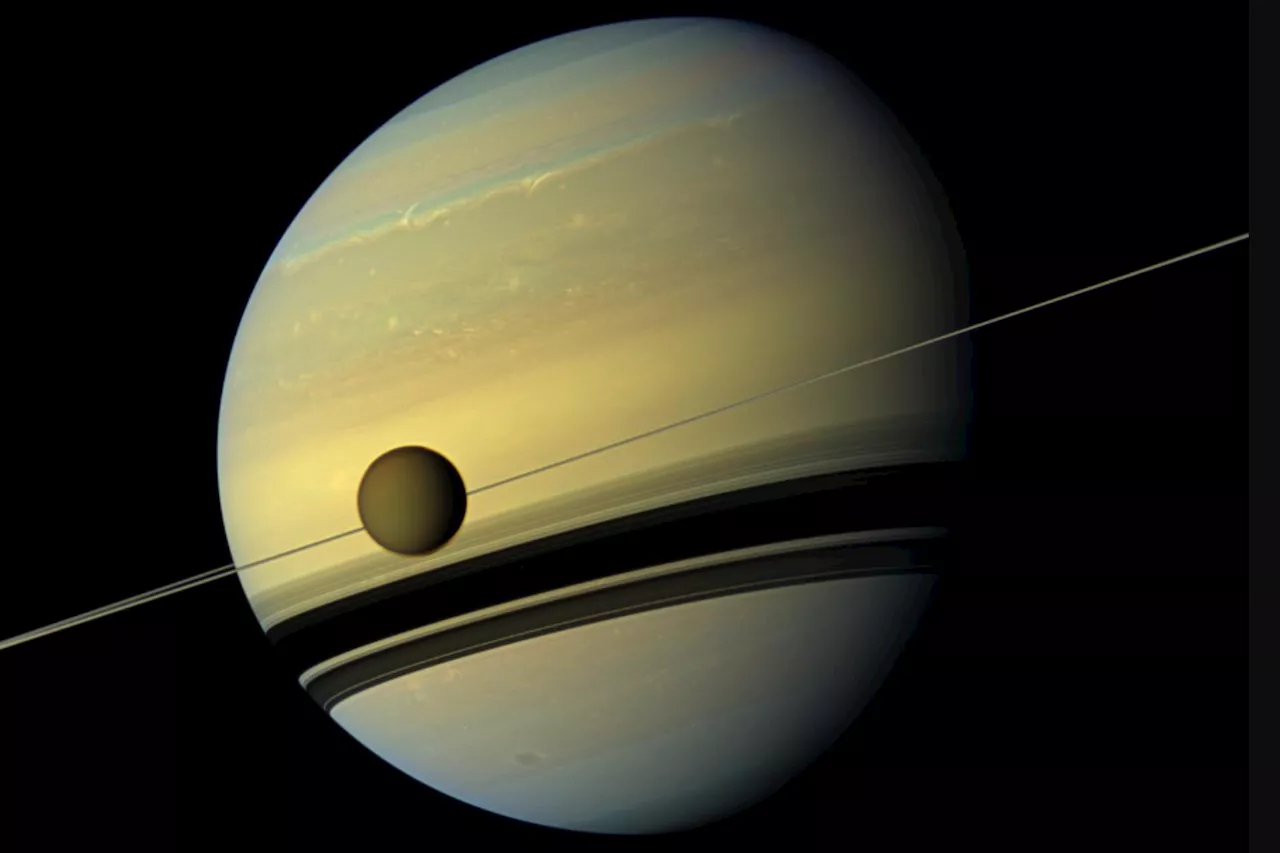A new study of radar experiment data from the Cassini-Huygens mission to Saturn has yielded fresh insights related to the makeup and activity of the liquid hydrocarbon seas near the north pole of Titan, the largest of Saturn's 146 known moons.
A new study of radar experiment data from the Cassini-Huygens mission to Saturn has yielded fresh insights related to the makeup and activity of the liquid hydrocarbon seas near the north pole of Titan, the largest of Saturn 's 146 known moons.
Valerio Poggiali, research associate at Cornell University, is lead author of"Surface Properties of the Seas of Titan as Revealed by Cassini Mission Bistatic Radar Experiments," which will publish July 16 at 11am EST inA bistatic radar experiment involves aiming a radio beam from the spacecraft at the target -- in this case Titan -- where it is reflected toward the receiving antenna on Earth.
Their analysis found differences in the composition of the hydrocarbon seas' surface layers, dependent on latitude and location . Specifically, the southernmost portion of Kraken Mare shows the highest dielectric constant -- a measure of a material's ability to reflect a radio signal. For example, water on Earth is very reflective, with a dielectric constant of around 80; the ethane and methane seas of Titan measure around 1.7.
"This fits nicely with meteorological models for Titan," said co-author and professor of astronomy Philip Nicholson,"which predict that the 'rain' that falls from its skies is likely to be almost pure methane, but with trace amounts of ethane and other hydrocarbons."
Space Probes Space Exploration Astronomy Space Missions Solar System Moon NASA
United States Latest News, United States Headlines
Similar News:You can also read news stories similar to this one that we have collected from other news sources.
 New analysis of Cassini data yields insights into Titan's seasA new study of radar experiment data from the Cassini-Huygens mission to Saturn has yielded fresh insights related to the makeup and activity of the liquid hydrocarbon seas near the north pole of Titan, the largest of Saturn's 146 known moons.
New analysis of Cassini data yields insights into Titan's seasA new study of radar experiment data from the Cassini-Huygens mission to Saturn has yielded fresh insights related to the makeup and activity of the liquid hydrocarbon seas near the north pole of Titan, the largest of Saturn's 146 known moons.
Read more »
 First-ever ‘major energy imbalance’ on Saturn detected by CassiniThis discovery came from data collected by the Cassini spacecraft, which spent nearly 20 years exploring Saturn.
First-ever ‘major energy imbalance’ on Saturn detected by CassiniThis discovery came from data collected by the Cassini spacecraft, which spent nearly 20 years exploring Saturn.
Read more »
 Saturn's planet-wide storms driven by seasonal heating, Cassini probe revealsSharmila Kuthunur is a Seattle-based science journalist covering astronomy, astrophysics and space exploration. Follow her on X skuthunur.
Saturn's planet-wide storms driven by seasonal heating, Cassini probe revealsSharmila Kuthunur is a Seattle-based science journalist covering astronomy, astrophysics and space exploration. Follow her on X skuthunur.
Read more »
 Waves of Methane Are Crashing on the Coasts of Saturn's Bizarre Moon TitanTitan's large seas and lakes may be influenced by waves, but not the kind you could surf, according to new research.
Waves of Methane Are Crashing on the Coasts of Saturn's Bizarre Moon TitanTitan's large seas and lakes may be influenced by waves, but not the kind you could surf, according to new research.
Read more »
 Saturn's moon Titan is experiencing coastal erosion from methane seasSaturn’s moon Titan has coastlines matching ones on Earth that have been carved by waves, hinting that Titan’s hydrocarbon seas and lakes also has them
Saturn's moon Titan is experiencing coastal erosion from methane seasSaturn’s moon Titan has coastlines matching ones on Earth that have been carved by waves, hinting that Titan’s hydrocarbon seas and lakes also has them
Read more »
 Lakes on Saturn's Largest Moon Titan Shaped by Waves, Scientists Say'At the edge of one of Titan's seas, we might see waves of liquid methane and ethane lapping on the shore,' a researcher said.
Lakes on Saturn's Largest Moon Titan Shaped by Waves, Scientists Say'At the edge of one of Titan's seas, we might see waves of liquid methane and ethane lapping on the shore,' a researcher said.
Read more »
